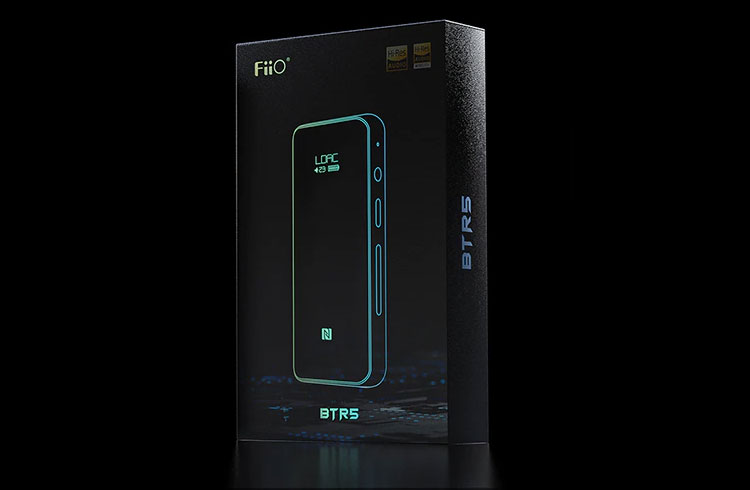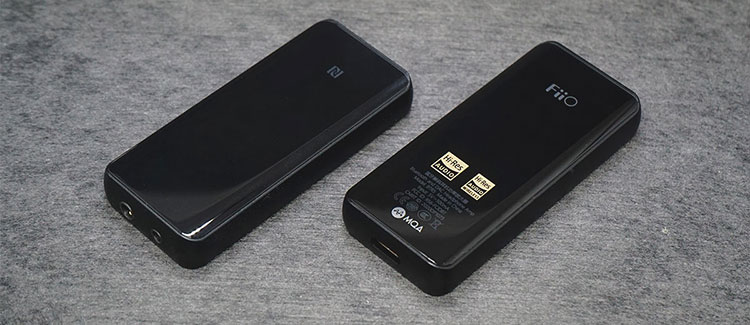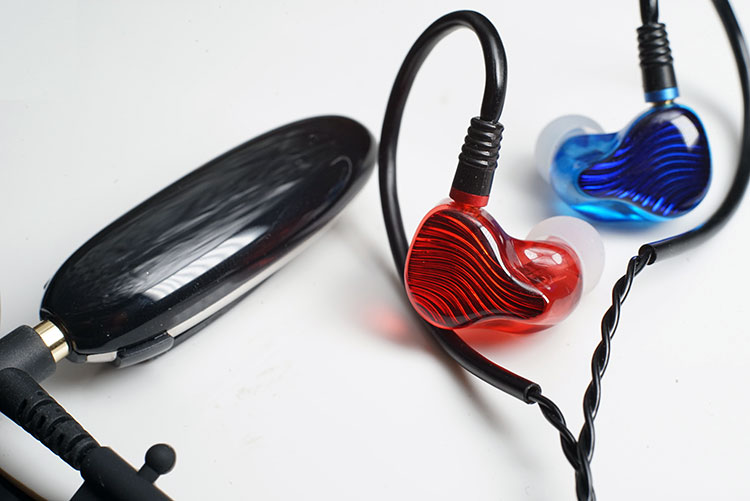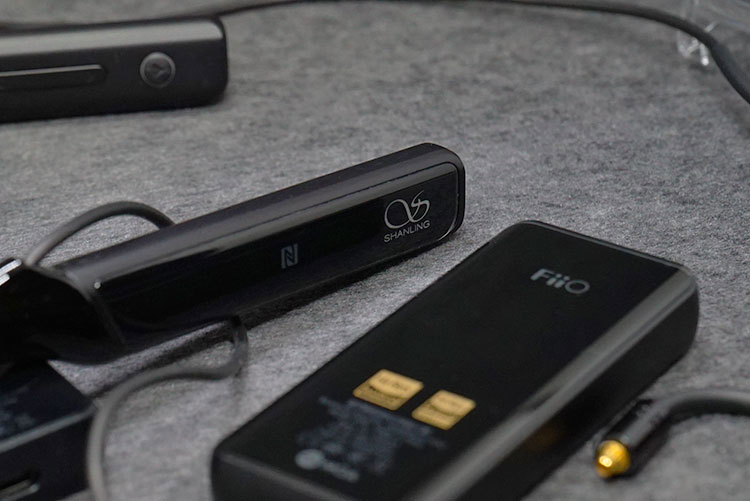Sound Impressions
Summary
Whilst there are a lot of similarities shared between the original BTR5 and the new BTR5 2021 the DAC upgrade does color the output in a slightly different way, while maintaining a similar level of output power.
With a USB connection, you can use the BTR5 2021 with your phone and tablets, this will allow MQA to decode with Tidal and offer a denser, fuller output compared to the LDAC connection.
Both wireless and wired mode doesn’t hiss at all and even with custom monitors, you can barely notice any noise in the background. On its LDAC connection, the BTR5 is very neutral and does not alter the coloring of our tested IEMs.
Various earphones tested with the BTR5 included a Final A5000, Earsonics CORSA, and Shanling ME700 Lite. These all have different impedance levels and cross-confirm the BTR5’s power and synergy.
In general, the output is slightly V-shaped, quite balanced in tone with decent power in the vocal range that doesn’t make it sound hollowed, nor over-stressing the bass or the treble frequencies either.
The below impression is made after a few weeks of burn-in and use during a commute on an LDAC wireless connection, also a USB-C connection on the M11 Plus Ltd, and a Xiaomi M11 smartphone.
Bass
The BTR5 2021 displays a clean signature with little coloration, especially on the balanced output. With the newer ES9219c chipset implemented, detail retrieval power in the bass is as great if not better than the original BTR5.
The bass is clearly outlined with clean and defined with low pitching instruments like drums and bass guitars cutting through the mix with good weight as well.
Testing with the Earsonics CORSA, the bass punches smoothly with a rather fast attack. You can hear a little bit of rumble in the background and it sounds well controlled with earphones like the Corsa, also IEMs that lean more to the bassy end.
The not-too-deep bass with good energy maintains a balanced and engaging signature, which works well with pretty much any genre.
With dynamic IEMs like the ER2SE, the bass gets more elaborated with slower bass decay rendered. That adds a bit of coloring and sounds soothing with pops and jazzes, with adequate layering, and renders the bass non-exaggerated.
Mids
The mid-lows on the BTR5 2021 articulate smoothly and keep the overall tuning well-balanced. Without boosting the midrange frequencies, the vocal sounds are denser and sharper which is great for soft vocal types and acoustic instruments adding to the clarity and keeping the output natural but clear sounding.
The mids do not steal the show on the BTR5 2021 rendering more space for instruments to be heard clearly. Although it may not fit a big ensemble, there is good enough resolution and separation power to sound brilliant with a string quartet or a jazz show, without overly emphasizing any particular frequency range.
Testing with the A4000 the vocal is slightly distanced sounding defined with good weight. There is enough energy for the mids to cut through the mix well and penetrate through the accompanied instruments while there is enough body in the mid-bass to keep the output coherent and neutral in tone.
Treble
The BTR5 2021 treble has decent headroom with the sibilance zone nicely controlled. That enhances the perceived resolution, especially for dynamic IEM pairings, and adds to the naturalness and definition of the vocal image just below.
The tuning works well for flatter-sounding IEMs or those that have a hint of warmth added, to sound more dynamic and cleaner. Putting on some woodwind track and whistle tunes there is decent air and good energy around the 5kHz range, and further beyond is rolled off to kill off sibilance.
Staging
The overall tuning does not overstress any particular frequency with the small push in the low-mids and treble helping to add more dynamics and definition. It does not have a huge soundstage but every element in the mix is held in place naturally and able to handle IEMs that are more on the power-demanding side to sound dynamic and defined.
The balanced output is clearly more capable of providing some additional energy into the lows and further up the definition of bass instruments. Again, it doesn’t pull instruments apart much while defining instruments nicely with a dense image. It also works very well with drum sets, flutes, and mixes that only stage a few objects.
The BTR5 2021 is great for instrumentals but for vocals, I would prefer some EQ to give it some more weight. The rather flat midrange has good density and separation from the backing track which is a good start for equalizing, and I am boosting the area around 300Hz for more warmth.
Select Comparisons
FiiO BTR5 (v1)
$119.99
Technical
The key difference between the two includes the upgrade to the newer generation ESS DAC with MQA support. These upgrades keep the BTR5 2021 up to date with the more power-efficient new DAC having a positive effect on the performance also, making it an even more attractive solution for portability-concerned users.
The predecessor BTR5 received a lot of praise delivering a stable performance thus far. However, the BTR5 2021 is much more complete with the additional USB-C cable that enables not just MQA decoding but an alternative way to experience the dongle in everyday use.
The same price tag seems better value now with the new hardware, features, additional cable as well and the slightly enhanced resolving power.
Design
The design is basically identical here and you will notice the MQA logo being added to the back, which makes the BTR5 2021 look cooler.
As you may have expected, the peripherals made for the BTR5 can also be used on the BTR5 2021 such as the aftermarket leather case made by ddHiFi I have been using the clip case for a week or two with the BTR5.
I actually ended up adding a carabiner to the ddHiFi leather case and hanging it on my pants, which works great and looks much nicer.
Performance
While it is more like an update than an upgrade, the change in spec still leads to a change in tonality, perceived quality, and synergy. The slightly more V-shaped output on the BTR5 2021 shapes the output to sound more defined and cleaner. This adds to the dynamics and strengthens the definition, especially with dynamic driver IEMs.
In the meantime, the newly added MQA support function with the USB-C cable makes the BTR5 2021 a USB dongle that supports up to 16x MQA unfold, doubling its function and flexibility. This makes the BTR5 2021 a great companion with laptops and tablets and superseding the original BTR5 in terms of matchability and functions.
The update completes the experience and gives even more value to the package. Unless you never stream or use your phone’s USB output, the BTR5 2021 would be a much more comprehensive and flexible package.
HiBy W5
$109
Technical
The W5 is the flagship Bluetooth receiver from HiBy using ES9218P DAC, which supports its own super UAT codec.
This pebble-like device offers up to 1.2Mbps Bit Rate and 192kHz sample rate over wireless transmitting with their in-house Codec. It also supports LDAC Codec which runs more stable on the W5. The CSR8675 controller offers a similar transmission range and connectivity for Bluetooth-capable devices.
The 3.5mm output offers 80mW @32ohm for each channel, similar to the 3.5mm output on the BTR5 2021, and is sufficient to drive most of the IEM out in the market with good power. The W5 does not have a balanced output while the BTR5 2021 sports a 2.5mm balanced jack which triples the power over the 3.5mm output.
Design
The IP67 waterproof certified W5 features a clean spaceship-like design, in big contrast to the BTR5 2021’s more traditional form factor. The BTR5 2021 does have a physical button control and a screen display which together offer more functions. The W5 is a more instinctive digital experience having everything controlled on the phone.
With a built-in clip, the W5 can be clipped on the pants or the edge of your shirt easily whilst the BTR5 2021’s additional case will allow the same with extra protection to the unit.
Performance
The W5 has a highly contrasting signature whilst the BTR5 2021 sounds more unaltered in its tuning. When switching to the balanced output the BTR5 2021 outmatches the W5 in separation, power, and definition yet the color on the W5 may make some flatter IEMs sound more engaging.
When focusing on the vocalist, the balanced output on the BTR5 2021 sounds clean and smooth. In contrast, on the W5’s single-ended output, it gives a stronger attack in the mid-bass region accompanied by a more intense lift in the upper mids to enhance dynamics.
This works pretty well with earbuds and some bassier earphones to add extra textures to the vocal line. However, it does not sound as natural as the BTR5 2021 and it doesn’t perform as naturally or as swiftly articulated as the BTR5 2021 when it comes to IEMs that have fuller mids.
Being less altered in tuning and more powerful, the BTR5 2021 has better fidelity overall and a more realistic headroom rendered. The W5 may sound more exciting and expanded in staging but at the expense of naturalness.
Shanling MW200
$119
Technical
The Shanling MW200 detachable Bluetooth receiver uses an AK4377A DAC and comes with a neck brace design. It decodes aptX HD and LDAC. Like the BTR5 2021, the MW200 has NFC connection support and a matching controller app that allows users to switch between filters as well as control a 5-band equalizer for self-defined tweaks.
Design
The MW200 and BTR5 2021 barely fall under the same category. Yet they do come with similar sets of features so for me, it is a draw comparing the designs and both units are practically easy to use and durable.
If you are bringing the BT dongles to the gym or going jogging then the MW200 could be handier with its shorter cable connecting to the earphones. There is no microphonic noise on the wire and it works great without a long cable dangling around.
Sound
With 38mW and 26mW output on 16Ω and 32Ω loads respectively, the MW200 can drive IEMs with lower impedance pretty well, preferably to be paired with IEMS that are sensitive and clean in tuning.
Testing with the A8000 that leans more to the treble, the pairing is very smooth and light-paced with satisfactory density in the mid-lows that goes well with up-lifting music works. The upper mids are also nicely outlined while not being sharp at all.
The same pairing on the BTR5 2021’s balanced output sounds cleaner and more polite. The vocal is defined with more details in the upper mids being highlighted, and the bass sounds faster than on the MW200 that has a stronger punch and more warmth.
The BTR5 2021 is not as full in the vocal range as the MW200 and its treble is more aggressive. That adds to the perception of enhanced resolution and clarity, especially with streaming content.
In general, I find the MW200 colored warmer and gives voices better authority and smoothness, while the BTR5 is more controlled and refined over the mids and sounds cleaner and more dynamic with instrumentals.

Our Verdict
Sometimes a big upgrade is not necessary for a product that is doing a great job, though FiiO has found a way to supersede the smash hit BTR5, which could be the best-selling Bluetooth receiver at the price bracket.
The BTR5 2021 brings up the bar again and completes the BTR5 package with the addition of MQA support and extra resolving power. It works great to boost the clarity and dynamics with almost any IEMs and in my opinion, continues to pose a threat to budget DAPs.
FiiO BTR5 2021 Technical Specifications
- DAC: Dual ES9218C
- Bluetooth chipset: CSR8675
- FPGA clock management with dual independent crystal oscillators
- Bluetooth version: 5.0 with LDAC support
- USB solution: Independent XMOS XU208 USB processor
- MQA support: 16x
- Bit rate supported: PCM 32-Bit/384kHz and DSD256 native, (USB connection)
- Volume Steps: Bluetooth: 32 steps, USB DAC: 60 steps
- Battery capacity: 550mAh
- Battery Life: up to 9H(3.5mm), Up to 7H(2.5mm)
- Charging time: 1.5H
3.5mm Headphone-out
- Output Power: up to 80mW(32ohm)
- SNR: -118dB
- Noise floor: <2uV
- THD+N: <0.004%
- Separation: 79dB
2.5mm Balanced Headphone-out
- Output Power: up to 240mW(32ohm)
- SNR: -122dB
- Noise floor: <2.2uV
- THD+N: <0.002%
- Separation: 117dB






